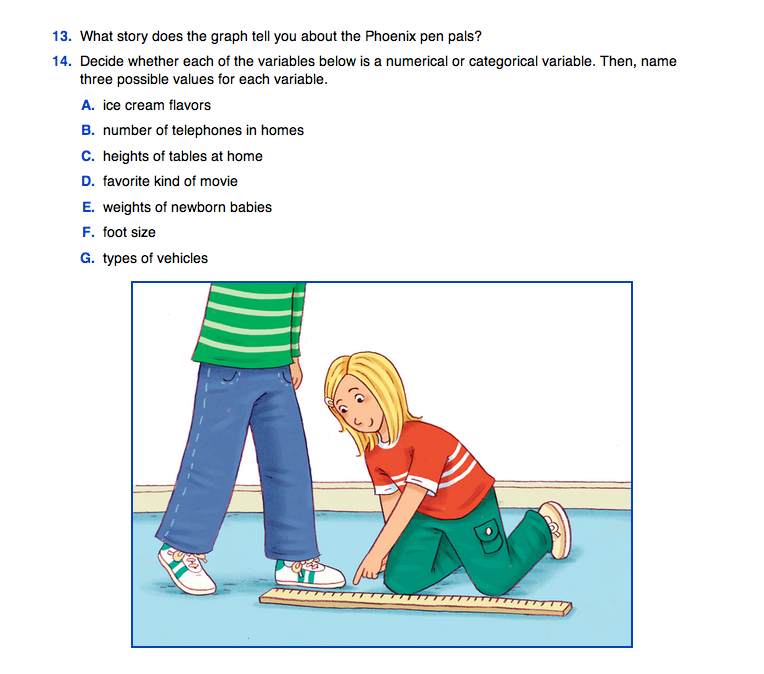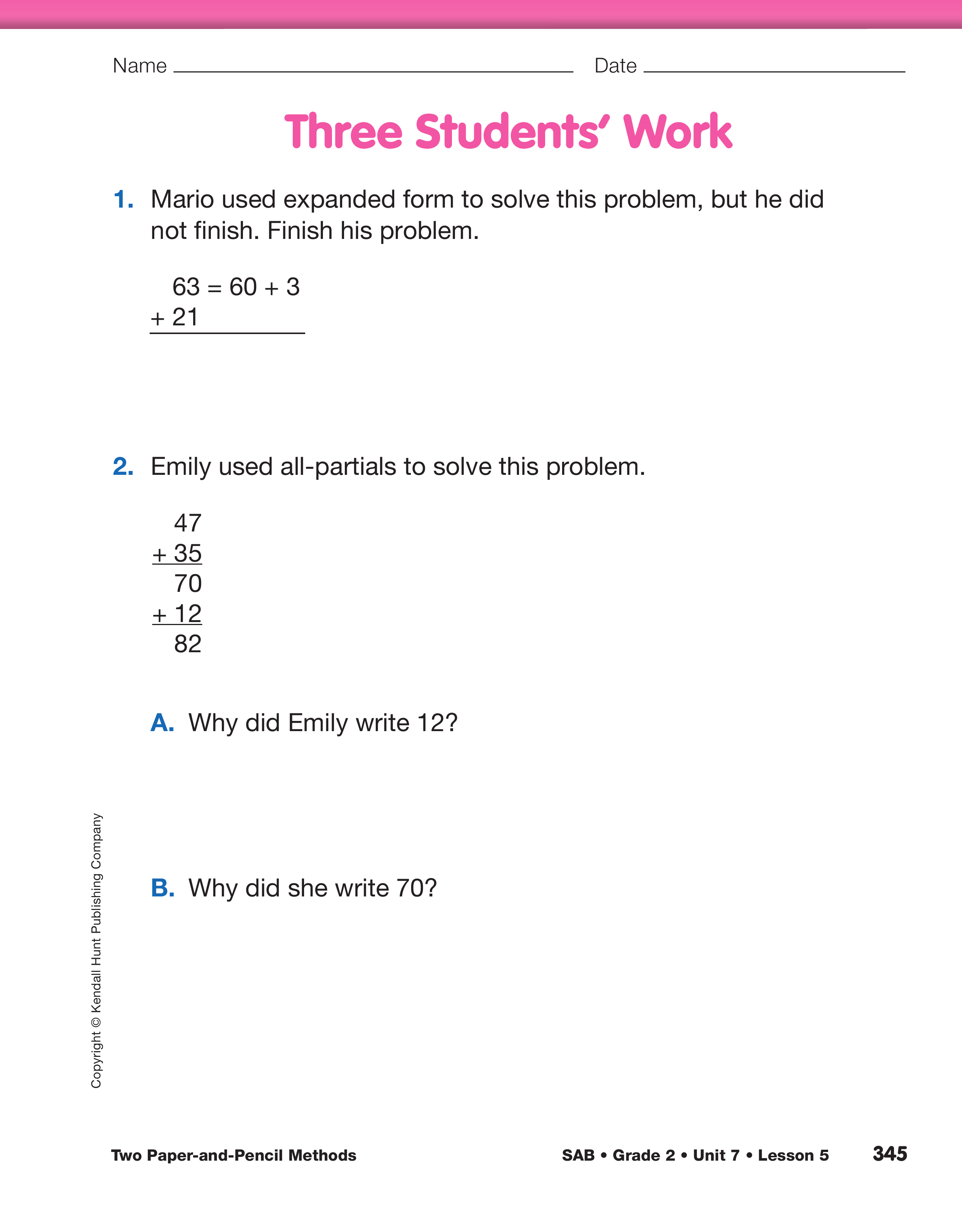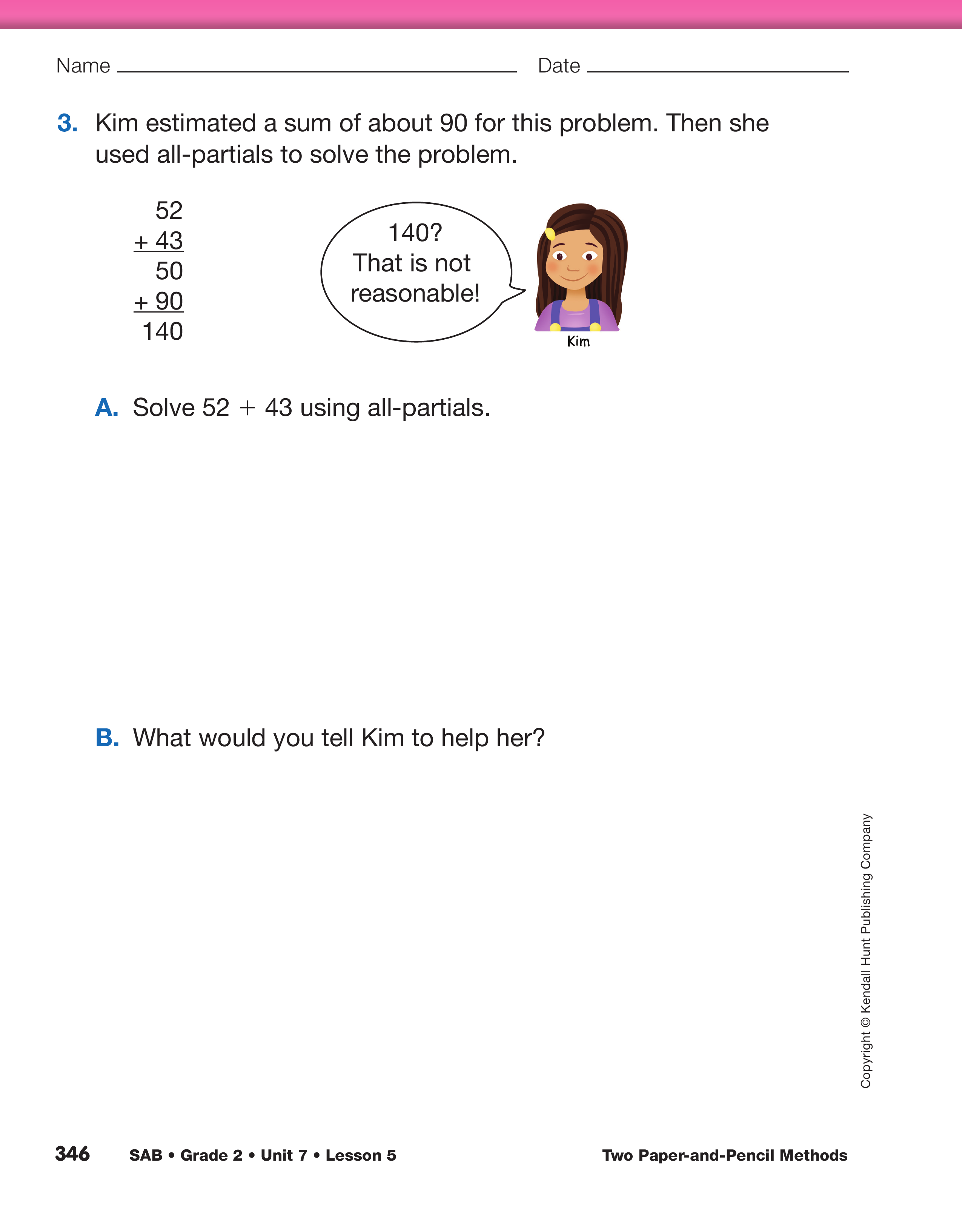Display the following problem and ask students to solve it using either the expanded-form
method or the all-partials method. Ask them to estimate the sum first.
Select two volunteers to demonstrate their solution strategies showing an example of each method.
- How are these two methods alike? (Possible responses: You think about tens and ones. You add tens and you add ones. They are both like adding skinnies and bits.)
- How are these two methods different? (Possible responses: There is more writing with expanded form. You break the numbers into tens and ones with expanded form and you see them written as sums of tens and ones. With all-partials, you think about the tens and ones because of where they are placed in the number. You write the problems differently.)
- Do both methods allow you to find the correct answer? (yes)
- Can one be done in fewer steps? (All-partials can be done in fewer steps than expanded form.)
- Can both methods be done quickly? (Yes, but expanded form takes a little longer because there is more to write down.)
- Is one method easier to understand than another?
- Are these methods efficient? Is one more efficient than the other?
- Which of the two methods do you like using the best?
- Think about all of the strategies we have discussed. What is your favorite? Why?
- Can you use your favorite strategy for every problem you solve, or do you think some strategies are better for some problems than others?
Assign the Three Students´ Work pages in the Student Activity Book for students to complete individually.
Use the Three Students´ Work pages in the Student Activity Book to assess students´
abilities to use and apply place value concepts [E1], add multidigit numbers using expanded form and all-partials
methods [E4], and show work [MPE5].
The Workshop in Lesson 7 provides targeted practice with these expectations.
















